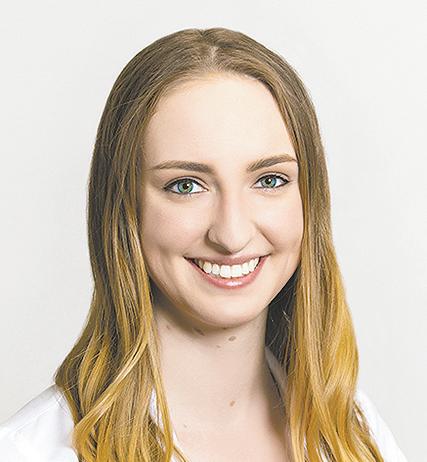
2 minute read
Getting older under the sun
By Sally Moe, Times Total Media Correspondent
Did you know that 80 percent or more of the visible signs of aging are due to sun exposure?

Eighty percent is a big number. But, depending on your resolve (and your personal history), it could be a lot lower. Of course, the earlier you start protecting yourself from the sun, the better. Young people tend to not give it much thought; old age seems far away. (Maybe that was you back in the day.) That said, many older people think the damage has already been done and there’s nothing they can do about it now. On that, they’re wrong. Recent research has shown that we continue to experience substantial UV exposure as long as we live; the majority of exposure occurs after age 40. This later exposure is often what kicks in to contribute to skin cancers, so sun protection remains critical throughout our lives. There are many reasons to protect yourself from the sun your whole life long. As in:
• Skin cancer – Melanoma, the most serious form of skin cancer, is now one of the most common cancers in the 15-29 age bracket. But the average age of people when it is diagnosed is 65.



• UV rays damage the DNA inside skin cells. Skin cancers can begin when this damage affects the DNA of genes that control skin cell growth.
• Cataracts (if untreated, they can lead to blindness)
• Corneal burning (aka snowblindness)
• Damage to the lens
• Damage to the macula (the central portion of the retina), increased risk of macular degeneration
• UV-induced immunosuppression – overexposure to UV radiation can weaken the immune system, reducing the skin’s ability to protect against cancers and infections.
• Heat stroke
Protect yourself. A sunny day is irresistible, but never forget: The sun’s rays can do significant damage to your skin, eyes and health if you don’t take precautions. Protect your eyes with UV-blocking sunglasses, apply a high SPF sunblock every two hours when you’re outside, go indoors or seek the shade during peak hours and check your skin monthly for moles or lesions. Follow the ABCDE rule when it comes to whether moles or lesions should be looked at:
• A is for Asymmetry: One half of a mole or birthmark does not match the other.
• B is for Border: The edges are irregular, ragged, notched or blurred.
• C is for Color: The color is not the same all over and may include different shades of brown or black, or sometimes with patches of pink, red, white or blue.
• D is for Diameter: The spot is larger than 6 millimeters across (about ¼ inch – the size of a pencil eraser), although melanomas can sometimes be smaller than this.
• E is for Evolving: The mole is changing in size, shape or color.
Finally, get a full body check with a dermatologist every year. Random facts…
• Rule of thumb: if, when standing outside, your shadow is shorter than you are, seek shade or go inside.
• Ultraviolet UV radiation from the sun and from tanning beds is classified as a human carcinogen by the U.S. Department of Health and Human Services, and the World Health Organization.
• More people develop skin cancer because of UV tanning than develop lung cancer because of smoking (per skincancer.org).
• Confused about UVA and UVB? Think of UVA as the aging sunlight, and UVB as the burning sunlight.
Information for this article was gathered from epa.gov, cancer.org, skincancer.org, cancerresearchuk.org, hopkinsmedicine.org, familydoctor.org, reverehealth.com and cnet.com










